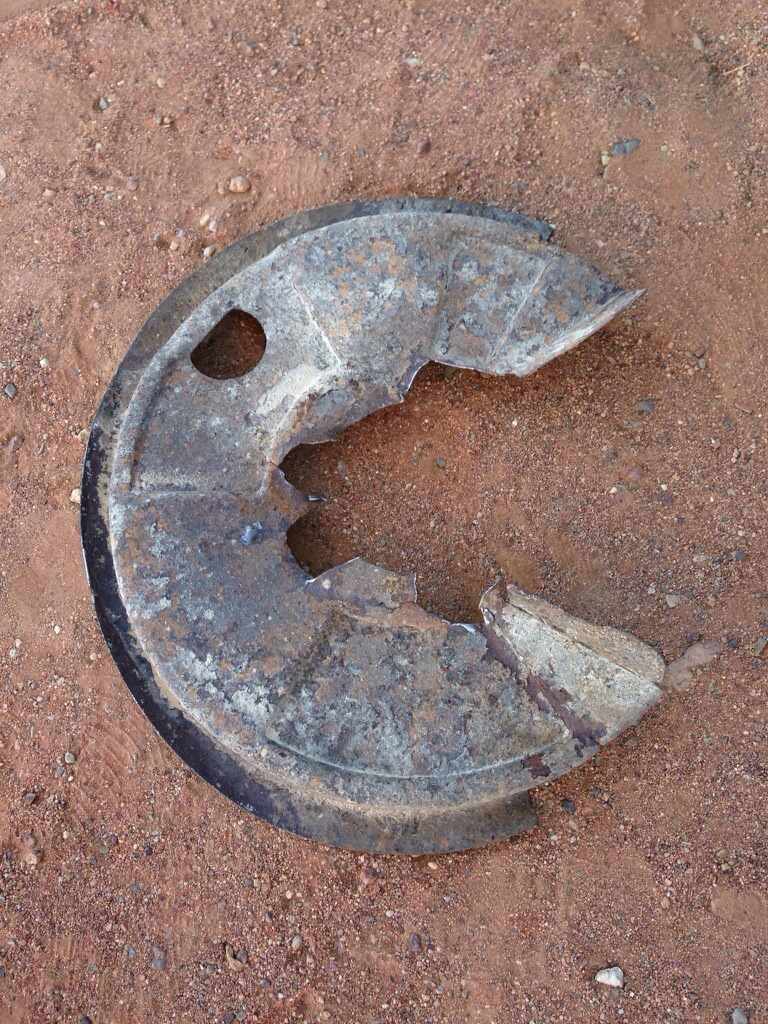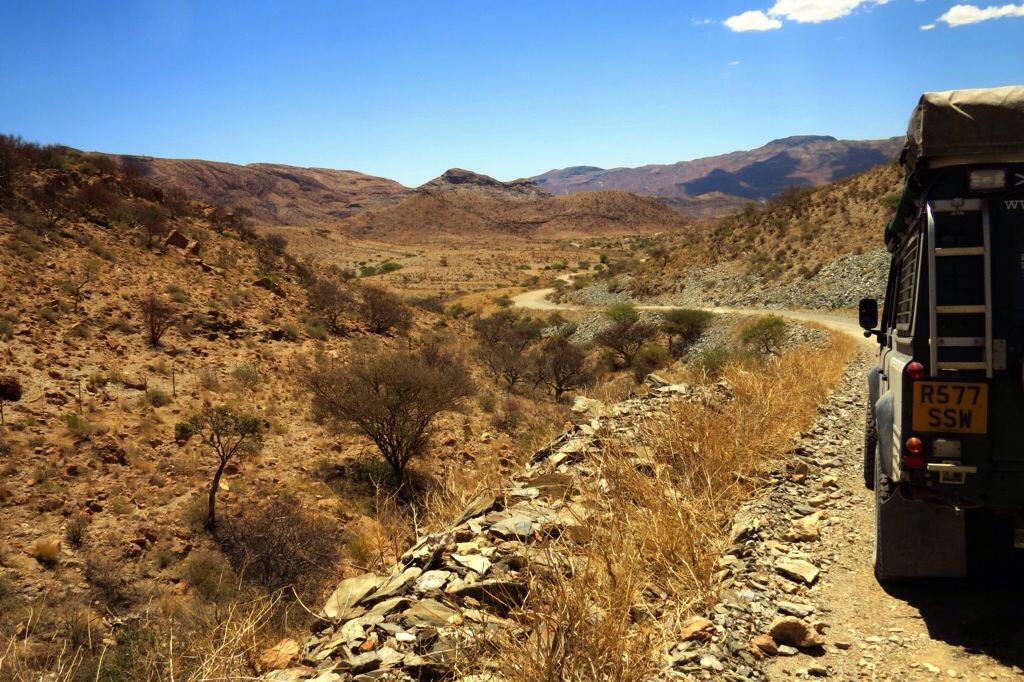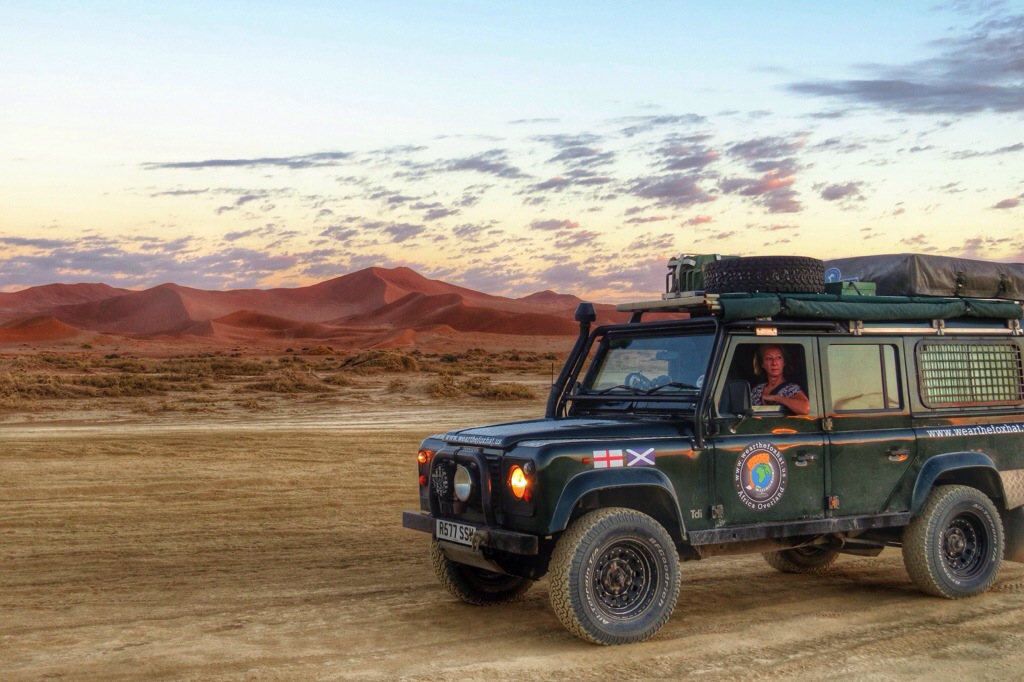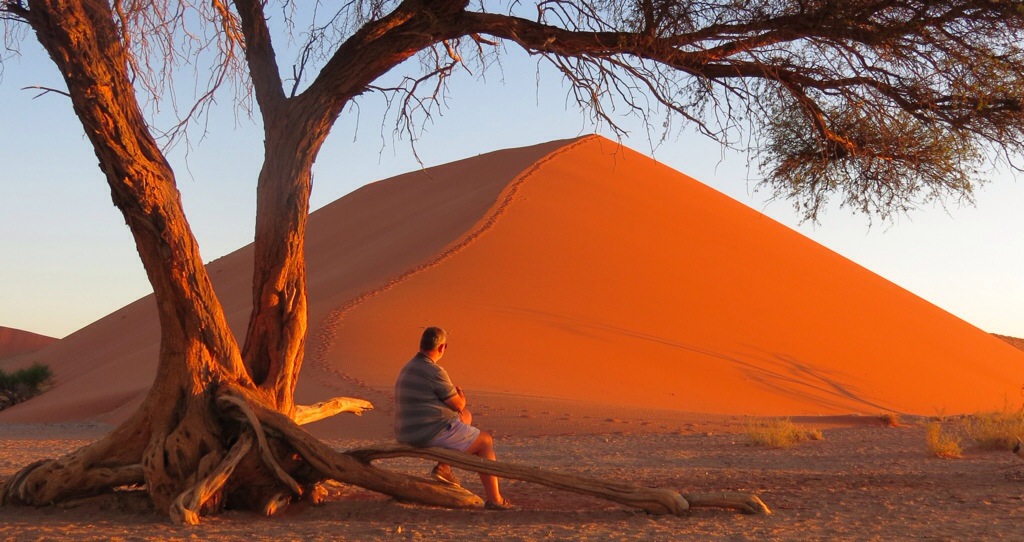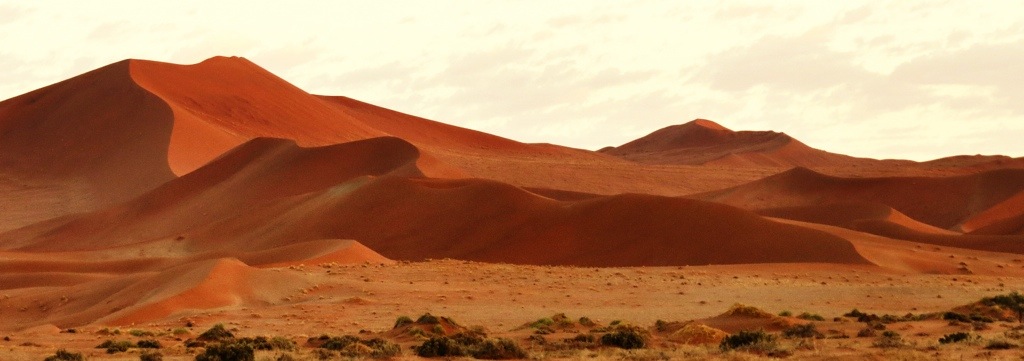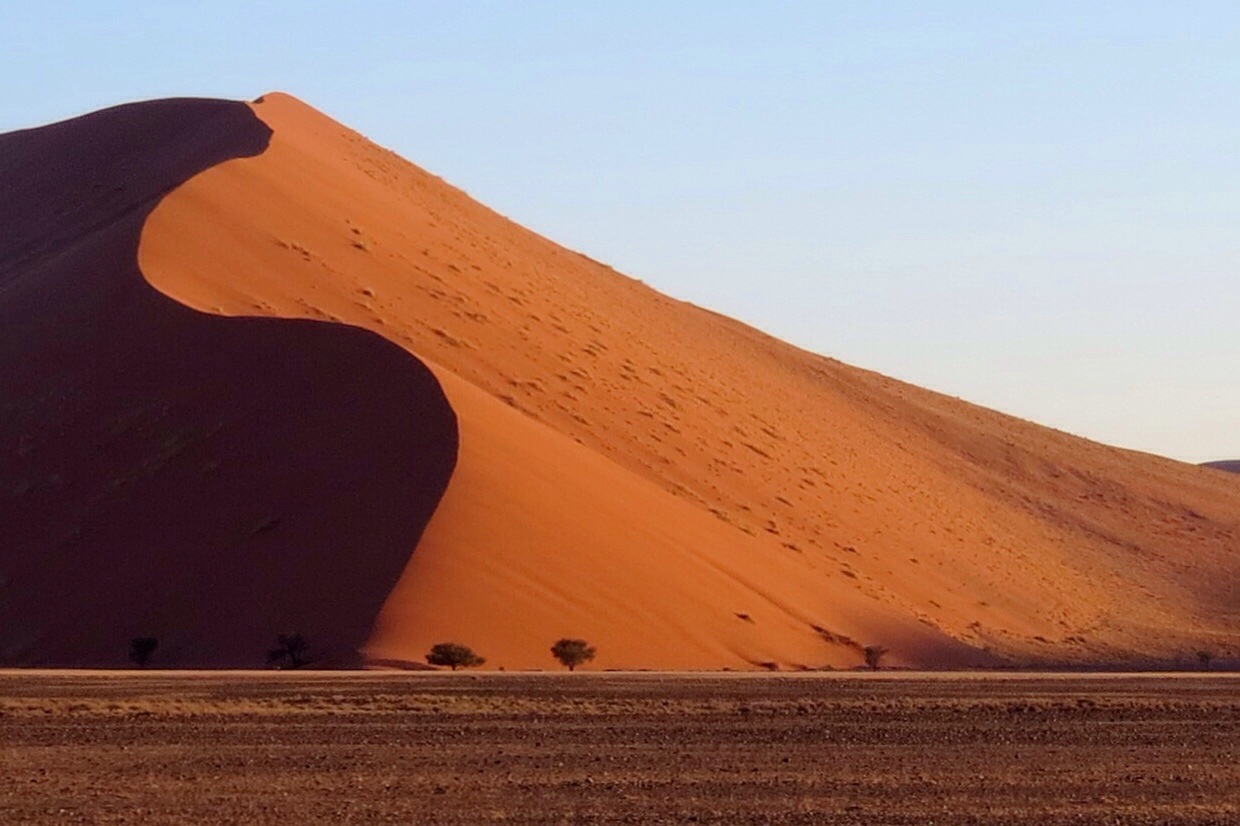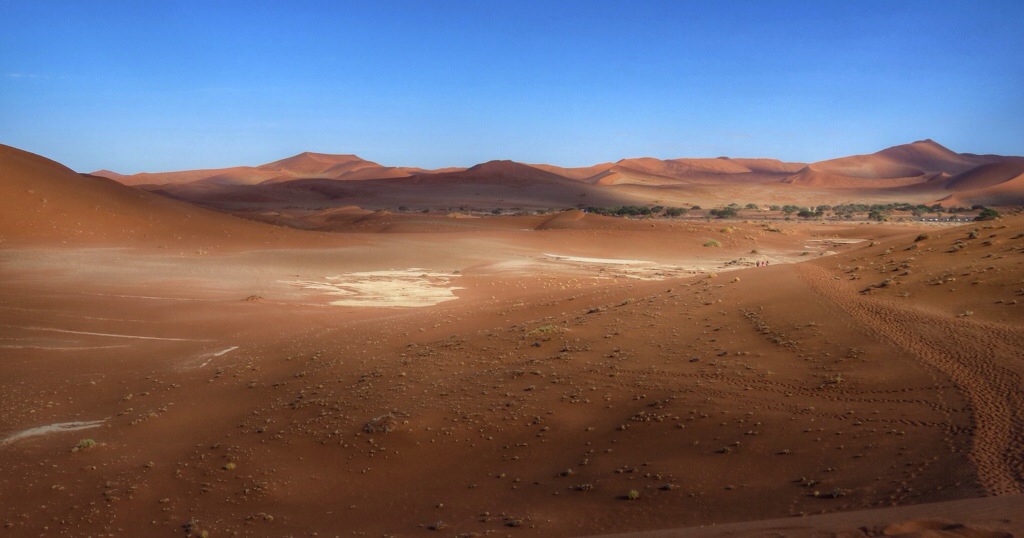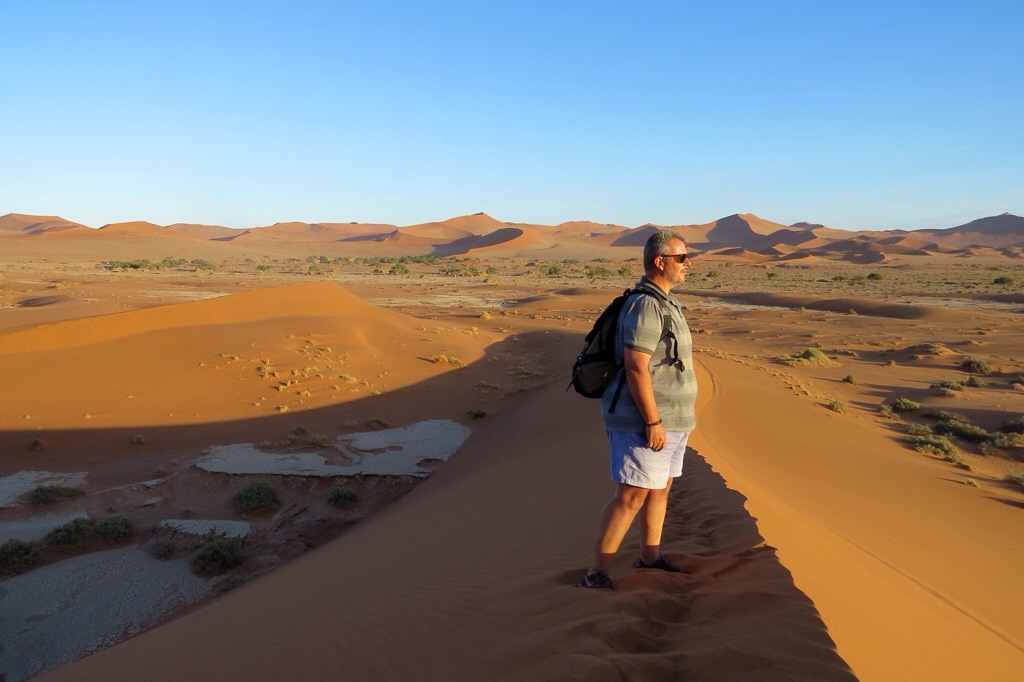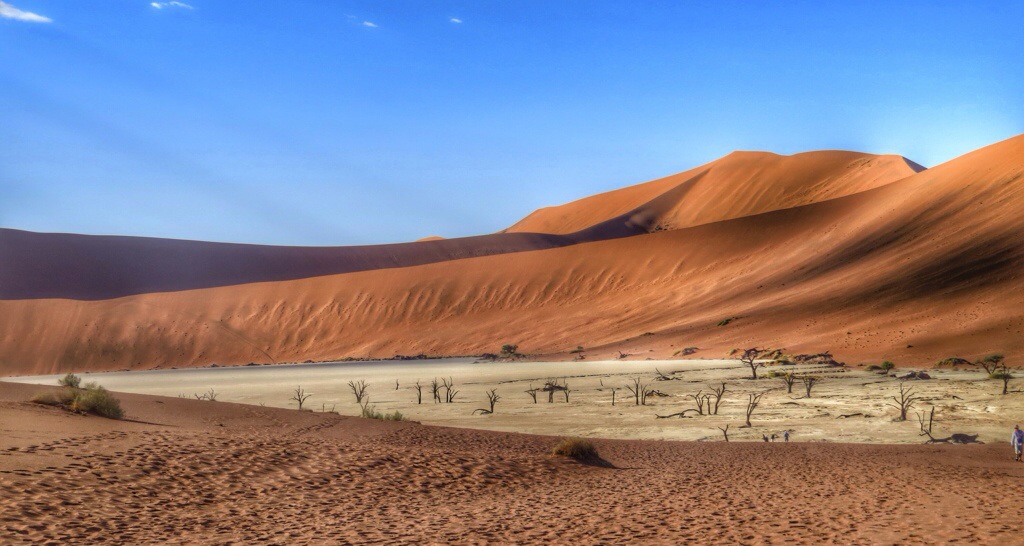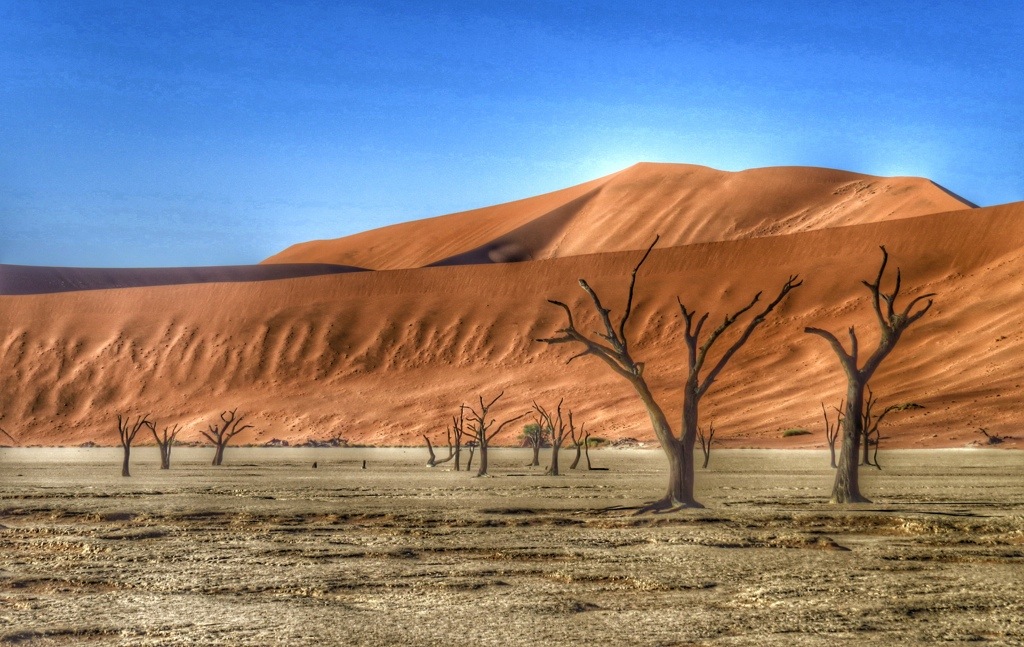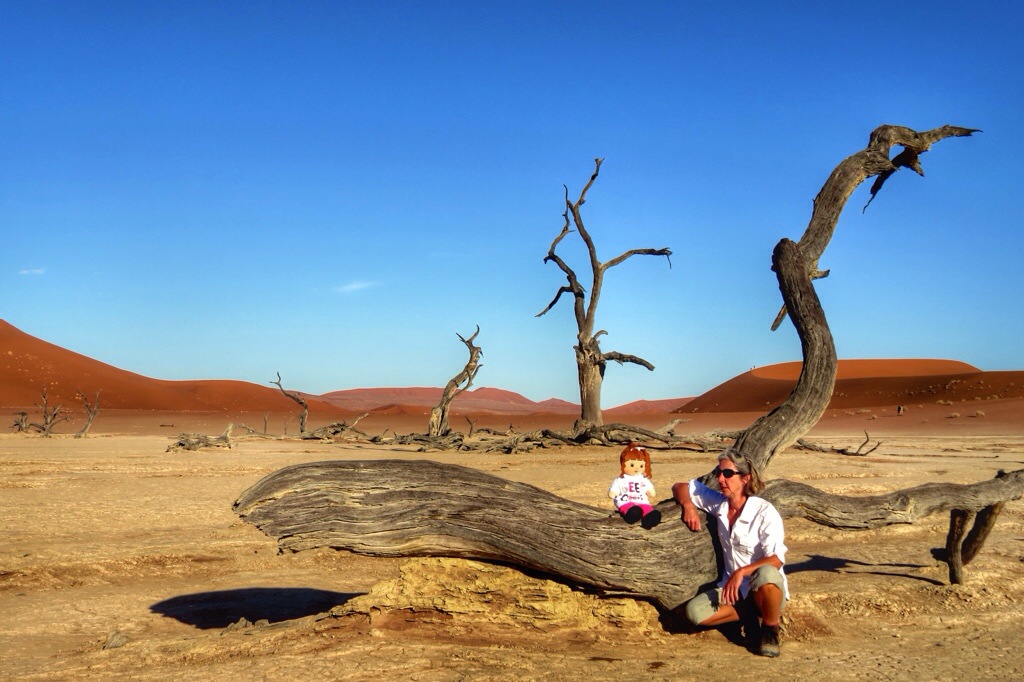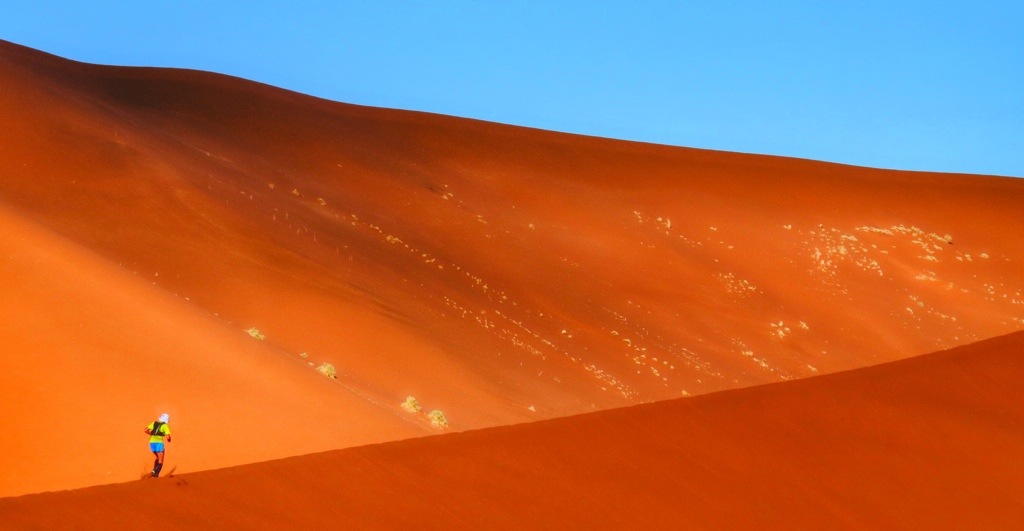There are basically 4 tar roads in Namibia & all are single lane – the B1 runs north / south, the B4 runs west from the B1 to Luderitz and the B2 runs west to Swapokmund / Walvis Bay (the B3 doesn’t really count as it’s really just a border crossing to S Africa).
All the other roads (!) are varying grades of gravel, sand or salt.
A few of them are good quality and easy to travel on (speeds up to 80kpm / 50mph).
The rest are what I now look on as ‘toll roads’.
There’s no monetary toll paid – it’s the toll they take on the car (or at least, on our car) that gets expensive.
In the rough, corrugated 300+ kilometres of the C19, D826, C24 & D407 to / from Sossusvlei the toll we paid was a rear brake disk guard (which I had to get the wheel off and remove in fierce heat the other morning)….
…plus loosing one of the front spotlight stone covers. This occurred only 2 days since having a bracket made for the rear mudflap, after the rust holding it to the bodywork finally gave way and it severed. I managed a temporary repair with some fencing wire but thanks again to LA Sport in Windhoek who fixed it properly.
That said, the ‘Toll’ we paid for getting to Sossusvlei was worth it.
Magnificent scenery on the way there…
… great driving towards the dunes at sunset…
…and a wonderful place to watch the sun go down.
The dunes can be a bit washed-out during the heat of the day, but are full of colour at sunset.
The green Camelthorn trees indicate that there is still some form of water course deep beneath the sand.
The road out into the Namib-Naukluft Dunes National Park is through a gate – which closes an hour after sunset, for safety reasons.
We drove back the 45 km to the camp in the rapidly dwindling twilight (we always try to avoid driving in the dark).
It wasn’t fun – at any speed over 45kph it’s pretty white-knuckle stuff due to the number of animals around the road: Oryx, Ostrich, Wildebeest, Springbok.
They have no concept of vehicles and, in the dark, are more likely to run into your path than out of it.
We made it back (stressed) with 10 minutes to spare, put up the tent and went straight to bed due to our planned trip to the big dunes and Dead Vlei the next day.
Awake at 4.15 am and packed up within 15 minutes we entered the dunes immediately after the gates opened again at 5am.
It’s an hours drive to the big dunes: the last 6km in deep, soft sand (never my favourite I’m afraid, as the car is very heavy since it’s kitted-out as our home for a year).
We made it though.
And it was worth it…
It’s pretty much essential to be here at first light – it’s cool enough to climb some of the dunes…
The dunes here are thought to be the biggest in the world.
They’re up to 300 metres high, run about 200km north to south and there’s nothing but more dunes from here to the Atlantic 70km west.
I got half way up!
You have to walk on the edge of the crest as they’re so soft and steep.
My enormous bulk meant that in less than 1km I was like a paddle-steamer trying to make-way in icing sugar.
Helene just skipped along like a pond-skater.
By half way up, the sun was cooking us – so we hopped over the side and slid down to Dead Vlei.
A surreal dry pan amongst the dunes.
These Accacia trees died about 500 years ago when the river through here changed course.
The light is stunning and the intensity of the sun picks out all the stark colours and detail.
By 10.30 we beat a retreat back to the car to find some shade and catch our breath.
Amazingly some tourists were still arriving to go out onto the dunes – madness in the 45-degree heat of mid-day.
Mind you, as we sat in the shade of the car (that fridge was worth every penny!) we saw this guy on top of one of the dunes…
He was the leader, running the Sossusvlei Marathon: 26 miles (excluding the elevation changes) up and down the dunes, in sand so soft that you have to take three steps in comparison to a normal stride on hard ground.
Incredible.


